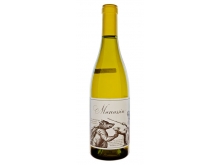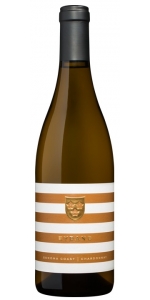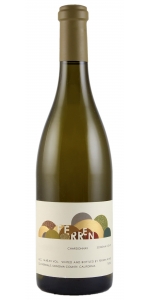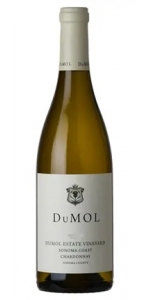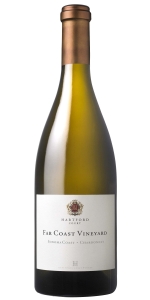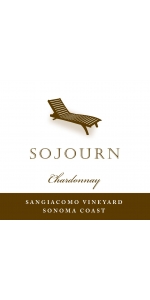Marcassin Sonoma Coast Chardonnay 2012
| Country: | United States |
| Regions: | California California (Sonoma County) |
| Grape Type: | Chardonnay |
| Vintage: | 2012 |
| Bottle Size: | 750 ml |
Bydand Chardonnay Sonoma Coast is made from 100% Chardonnay
Aged for 16 months in 30% new French oak, 70% neutral French oak
Farmed by one of California’s most respected and longest operating grape-growing families, the Roberts Road Vineyard is located in the Petaluma Gap. Sitting on well draining gravel soils, coastal winds allow for a long, slow and even growing season. Planted in 1998 these Dijon 95 grapes provide minerality and vibrancy to a full-bodied wine with impressive purity of flavor and mouth-feel. French oak barrels add subtle toast to aromas of pear, stone fruits and white citrus.
Ferren Chardonnay Sonoma Coast is made from 100 percent Chardonnay.
The Sonoma Coast bottling is a blend of barrels from Ferren's single vineyard offerings; Lancel Creek, Silver Eagle, Volpert, and Frei Road Vineyards. The wine is always somewhat more approachable early in its life as less new oak is used in the blend. Pure and translucent fruit is the hallmark of this cuvée. Citrus, quince, sea spray, and minerals are buoyed by refreshing acidity and a seamless finish.
Ferren Chardonnay Sonoma Coast is made from 100 percent Chardonnay.
The Sonoma Coast bottling is a blend of barrels from Ferren's single vineyard offerings; Lancel Creek, Silver Eagle, Volpert, and Frei Road Vineyards. The wine is always somewhat more approachable early in its life as less new oak is used in the blend. Pure and translucent fruit is the hallmark of this cuvée. Citrus, quince, sea spray, and minerals are buoyed by refreshing acidity and a seamless finish.
Winemaker’s Notes
Our organically farmed high-density Estate parcel sits at the top of the ridge amongst the diverse coastal forest. Although the soil is sandy, there’s a vein of clay in the subsoil that holds winter rain and allows us to dry-farm the vines. The tight spacing keeps the clusters and soil shaded during the summer heat, which allows the fruit to retain all the nuance of the site. The wine produced here has a character - a signature - all to itself and cannot be replicated elsewhere; it's the antithesis of fruity, forward, easy-to-understand Californian Chardonnay. The grapes are small with thick skins, producing a high level of fruit extract, which translates to deep texture and structure in the wine itself. Concentration allied to freshness is the essence of this wine, and it ages beautifully in bottle for ten to twelve years.
The wine’s aromas and flavors are incredibly complex and diverse, akin to citrus oil, preserved lemon, sage, fennel and caraway. The wine is deep, powerful, and layered with oyster shell freshness cutting through the natural density. Lemongrass, spearmint, and grapefruit power the finish, which pulsates with intensity. You could decant this for an hour before serving to hasten its development. Drink between 2025 and 2030. Serve no cooler than 55º F.
Review:
From a site surrounded by dense forest on two sides, the 2022 Chardonnay DuMOL Estate Vineyard is a bright straw hue and has a more vibrant aromatic nose of fresh mint, bright lime, flint, crushed stones, and white peach. Medium to full-bodied, it boasts a remarkably firm structure with a bit of tannin, a chalky texture, and a savory slanting profile, and it’s long and persistent on the finish. It has an assertive but crystalline feel and a crunchy brightness. It demands a bit of time. Drink 2025-2035.
-Jeb Dunnuck 96 Points
Hartford Court Far Coast Vineyard Chardonnay is made from 100 percent Chardonnay.
The 2019 Far Coast Vineyard Chardonnay exhibits aromas of orange zest, yellow apple, dried fruits, and spice. The flavors of tangerine, mandarin orange, and quince are followed by a long textural finish of minerals and delicate fruit.
Review:
This vineyard is located on a mountain ridge north of Fort Ross on the Sonoma Coast at 700 feet elevation, and the wine was aged for 14 months in 39% new French oak. The 2019 Chardonnay Far Coast Vineyard offers more lime citrus, saline minerality, and white peach, and the palate is fresh, energetic, and consistent with the nose. Texture-wise, it is markedly different, with more focused structure and tension.
-Jeb Dunnuck 96 Points
Sojourn Chardonnay Sangiacomo Vineyard is made from 100 percent Chardonnay.
The core of Sojourn Sangiacomo Vineyard Chardonnay is from the same vineyard source as the highly-acclaimed Sojourn Sangiacomo Vineyard Pinot noir wines. This wine features a combination of Clone 95 Chardonnay from Sangiacomo Roberts Road Vineyard and Old Wente Clone from Sangiacomo Vella Ranch. The Roberts Road block, planted in 1998, provides minerality and vibrancy. The Old Wente Clone selection is known to produce distinctively small clusters, low yields, and results in elegant, complex wines that round out this blend. These ranches are perfectly suited for growing Chardonnay, with cool climates and well-draining soils.
Sojour Chardonnay is fresh and lively, fruit-forward with bright acidity, stone fruit, citrus and apple flavors that leave your mouth watering.
The 2012 Chardonnay Marcassin Vineyard, which will probably be released in a few months, displays great minerality, notes of honeysuckle, orange marmalade, poached pear, and white flowers as well as a touch of quince. A wine of great intensity, yet incredibly ethereal elegance, this light greenish gold-colored wine is full-bodied, stunningly rich, and altogether remarkable. When you consider that they use 100% new French oak and 100% heavy toast for both their Chardonnays and Pinot Noirs, it is remarkable how little oak appears in these wines. This wine should age well for 10-15 years, as most of the Marcassin Estate Chardonnays have done to date.
What an extraordinary tasting this was at the Marcassin winery just north of Santa Rosa in Sonoma County. Just when you think the duo of Helen Turley and John Wetlaufer can’t make greater wines, they bowl over the taster with an array of exquisite quality that really must be tasted to be believed. Marcassin was probably California’s greatest Chardonnay after the famous Chalone winery fell from the pinnacle and onto hard times in the 1980s (and it has yet to rebound). Moreover, Marcassin set the bar for great Pinot Noir as well. And while both their Chardonnay and Pinot Noir have many competitors these days (from the likes of Harford Court, Mark Aubert, Kistler, Kongsgaard, DuMol, Thomas Brown, Peter Michael, Martinelli and Luc Morlet, to name a few), John Wetlaufer and Helen Turley remain the reigning geniuses of these two varietals in California. Certainly, their meticulous attention to detail in both the vineyard and in the winemaking and élevage account for the quality, but they were among the pioneers who saw the unlimited potential from the Sonoma Coast, now a relatively crowded neighborhood. This was a remarkable tasting that simply blew me away, and I have been following their wines since the first Marcassins were made in the early 1990s. By the way, any doubts about aging potential should be crushed immediately, as even in the most challenging vintages in California, Marcassin Chardonnays and Pinots have aged as well as, if not better than just about any grand cru white Burgundy. For example, 1995 and 1996 Chardonnays, particularly those from the Lorenzo Vineyard, are incredibly youthful and dynamic, and the Marcassin Estate Pinot Noir, even from vintages such as 1998, is simply amazing.
The three Chardonnays tasted include two perfect wines. Perhaps the closest comparison is not to anything made in California, but a Corton-Charlemagne in a top vintage from the famous Jean François Coche-Dury. - Wine Advocate 100 Points
- back
All older vintage wines have been purchased from a single collectors cellar. Pictures can be requested before shipment.

